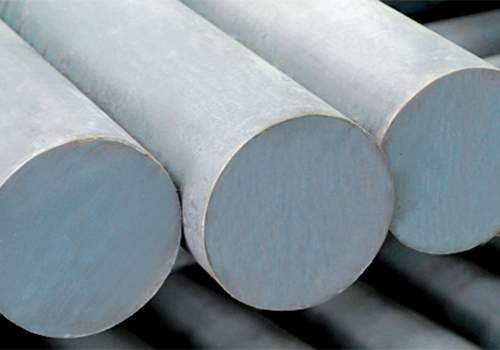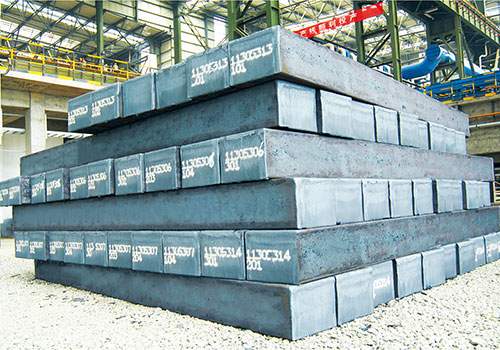
How to Choose the Right Billet Steel Sizes for Your Needs
Table of Contents
Introduction
Billet steel is a fundamental material in manufacturing and construction, serving as a raw product for various applications, including rolling, forging, and extrusion. Understanding billet steel sizes is crucial for ensuring that the material fits your specific project requirements. The right size of billet steel can impact the efficiency, strength, and cost-effectiveness of your manufacturing process. In this guide, we’ll explore how to choose the right billet steel sizes for your needs, covering everything from the basics of billet steel to detailed considerations when selecting sizes.
What is Billet Steel?

Billet steel is a semi-finished product that is typically square or rectangular in cross-section. It is produced through a continuous casting process or by hot rolling and is used as a raw material for creating a wide range of steel products. The dimensions of billet steel can vary significantly, depending on the intended application and the subsequent processing it will undergo.
Key Characteristics of Billet Steel:
- Shape: Billet steel typically comes in square or rectangular cross-sections.
- Size: The size of billet steel varies, with common cross-sectional dimensions ranging from 100 mm x 100 mm to 200 mm x 200 mm or larger.
- Material: Billets are made from different types of steel, including carbon steel, alloy steel, and stainless steel, each offering specific properties suitable for different applications.
Importance of Choosing the Right Billet Steel Sizes
Selecting the correct billet steel size is vital for ensuring that the material meets the demands of your project. The size impacts not only the final product but also the efficiency of the manufacturing process, the cost of materials, and the overall quality of the output.
1. Manufacturing Efficiency
The right billet steel size can enhance manufacturing efficiency by reducing waste and minimizing the need for additional processing. For example, using billets that closely match the final dimensions of the product can reduce the amount of material that needs to be cut away, saving time and resources.
2. Material Strength and Quality
The size of the billet can influence the strength and quality of the final product. Larger billets may be required for components that need to withstand high stress or load, while smaller billets may be suitable for less demanding applications.
3. Cost Considerations
Choosing the correct billet steel size can also help control costs. Larger billets may be more expensive, but they can reduce the need for multiple smaller billets, which can increase labor and processing costs.
Key Factors to Consider When Choosing Billet Steel Sizes
When selecting the right billet steel sizes for your needs, several key factors should be considered. These factors will help ensure that the billet steel you choose is well-suited to your specific application and project requirements.
1. Application and End-Use
The intended application and end-use of the billet steel play a significant role in determining the appropriate size. Different applications require different billet sizes, depending on the final product’s dimensions and the manufacturing process.
- Heavy-Duty Applications: For applications like construction beams, automotive parts, and large machinery components, larger billets with higher cross-sectional dimensions are typically required.
- Precision Components: For smaller, precision components such as gears, bolts, or small machine parts, smaller billets are more appropriate.
2. Type of Steel
The type of steel used in the billet can affect the appropriate size. Carbon steel, alloy steel, and stainless steel each have different properties that can influence the billet’s strength, machinability, and resistance to wear and corrosion.
- Carbon Steel Billets: Commonly used for general-purpose applications where strength and toughness are required.
- Alloy Steel Billets: Ideal for applications that require specific mechanical properties, such as high strength, hardness, or wear resistance.
- Stainless Steel Billets: Used in applications where corrosion resistance is critical, such as in chemical processing, food handling, or marine environments.
3. Manufacturing Process
The manufacturing process you plan to use will also dictate the billet size. Different processes, such as rolling, forging, or extrusion, have specific requirements for billet dimensions.
- Rolling: Rolling processes typically require billets with consistent cross-sectional dimensions that can be easily fed into the rolling mill.
- Forging: Forging processes may require billets with larger cross-sections to produce large, high-strength components.
- Extrusion: Extrusion processes often use billets with uniform dimensions that can be pushed through a die to create continuous profiles.
4. Availability and Lead Times
The availability of specific billet sizes and the lead times for production can influence your choice. Standard sizes are typically more readily available and can be sourced quickly, while custom sizes may require longer lead times and additional costs.
- Standard Sizes: These are more commonly available and usually have shorter lead times.
- Custom Sizes: Custom sizes may need to be specially produced, which can increase lead times and costs.
5. Cost and Budget
Cost is always a critical consideration when choosing billet steel sizes. It’s essential to balance the need for the right size with the constraints of your budget.
- Material Costs: Larger billets are generally more expensive, but they can reduce overall processing costs if they fit your requirements better.
- Processing Costs: Consider the cost of machining or shaping the billet to your final specifications. Choosing the correct size can minimize these costs.
Table: Common Billet Steel Sizes and Their Applications
| Billet Steel Size (mm x mm) | Typical Applications | Material Types |
|---|---|---|
| 100 x 100 | Small machine parts, fasteners, precision components | Carbon steel, alloy steel, stainless steel |
| 125 x 125 | Automotive parts, medium-sized construction elements | Carbon steel, alloy steel |
| 150 x 150 | Large structural components, heavy machinery | Carbon steel, alloy steel |
| 180 x 180 | Beams, large industrial components | Carbon steel, alloy steel |
| 200 x 200 | Large-scale infrastructure, heavy-duty applications | Carbon steel, alloy steel |
This table provides an overview of common billet steel sizes, their typical applications, and the types of materials commonly used. Understanding these sizes and their uses can help you select the most suitable billet for your project.
Steps to Determine the Right Billet Steel Size for Your Project

Choosing the right billet steel size involves several steps. Following a systematic approach can help ensure that you select the most appropriate size for your specific needs.
Define the Project Requirements
Start by clearly defining the requirements of your project. Consider the final product’s dimensions, the material properties needed, and the manufacturing process that will be used.
Consult with Engineers and Material Specialists
Work closely with engineers and material specialists to determine the appropriate billet size. They can provide valuable insights into the material properties, manufacturing constraints, and cost considerations.
Analyze the Manufacturing Process
Review the manufacturing process to ensure that the billet size you choose is compatible. Consider factors such as rolling mill capacity, forging press size, or extrusion die dimensions.
Consider Material Properties
Select the billet size based on the material properties required for your application. Ensure that the size and type of steel chosen meet the necessary strength, hardness, and corrosion resistance specifications.
Evaluate Availability and Cost
Finally, evaluate the availability of the selected billet size and consider the cost implications. Ensure that the size is readily available and fits within your budget constraints.
Conclusion
Choosing the right billet steel sizes is a crucial step in ensuring the success of your project. By understanding the various factors involved, including the application, by understanding the various factors involved, including the application, material properties, manufacturing process, and cost considerations, you can make an informed decision that aligns with your project’s needs. Whether you are working on a small-scale project requiring precision components or a large industrial endeavor demanding heavy-duty materials, selecting the appropriate billet steel size is essential for optimizing performance, reducing waste, and ensuring the overall quality of the final product.
With careful planning and consultation with experts, you can choose the right billet steel size that meets both your technical requirements and budgetary constraints, ultimately contributing to the success of your project.
FAQ
What is the most common billet steel size for general-purpose applications?
The 100 x 100 mm billet size is commonly used for general-purpose applications, such as small machine parts and precision components.
Can I order custom billet steel sizes for my project?
Yes, custom billet steel sizes can be ordered, but they may require longer lead times and higher costs compared to standard sizes.
How does the billet size affect the strength of the final product?
The billet size can impact the strength of the final product, with larger billets generally providing greater strength and durability, especially in heavy-duty applications.
What type of steel is best for high-corrosion environments?
Stainless steel billets are best for high-corrosion environments due to their excellent resistance to rust and corrosion.
How do I choose the right billet size for rolling processes?
For rolling processes, choose a billet size that matches the rolling mill’s capacity and ensures consistent cross-sectional dimensions throughout the process.
Is there a standard size for billet steel used in automotive parts?
Billet sizes of 125 x 125 mm and 150 x 150 mm are commonly used in the automotive industry for parts such as axles and gears.
What factors should I consider when selecting billet steel for forging?
When selecting billet steel for forging, consider the billet’s cross-sectional dimensions, material type, and the forging press’s capacity.
Can billet steel sizes affect the cost of my project?
Yes, the size of the billet can significantly affect the cost of your project, both in terms of material costs and processing expenses.
How does billet size influence the machinability of the material?
The billet size can impact machinability, with larger billets generally requiring more machining effort but potentially offering better material stability.
What is the difference between billet steel and other semi-finished steel products?
Billet steel is typically square or rectangular in cross-section and used as a raw material for further processing, while other semi-finished products like slabs or blooms may have different shapes and are used for different applications.






